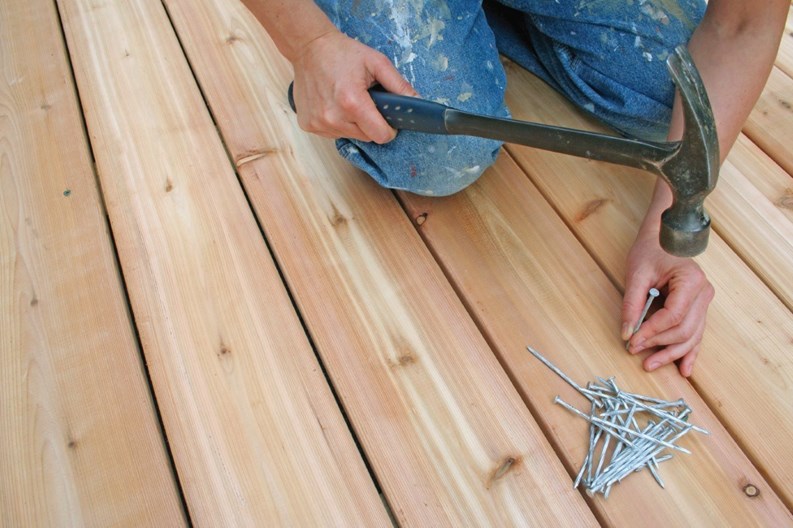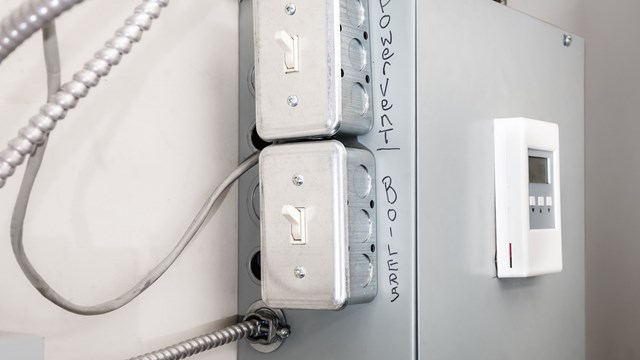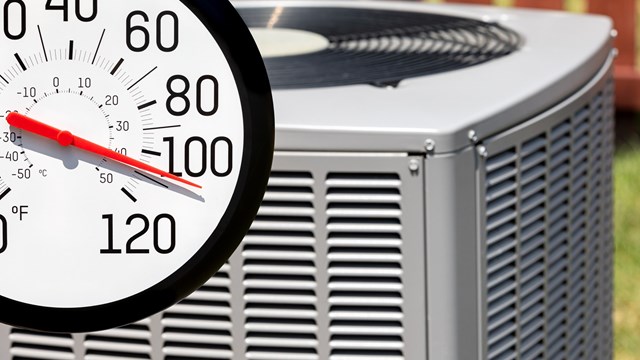There's nothing quite like a summer's day spent relaxing on your deck with friends. For many of us, it's like having a small piece of paradise right outside our doors. Condominium associations know that well-maintained and attractive decks serve as enticements to both current and potential residents. That's why so much time and effort goes into the care, maintenance and repair of these amenities.
In coastal towns where salty sea air can wreak havoc on wood and in older condo communities where decks were built 15 or 20 years ago, the wear and tear can be significant, warranting an organized plan for ongoing preventativecare and maintenance.
According to Mark Audette, CPM, a principal at Great North Property Management, located in Portsmouth, New Hampshire with regional offices in New Hampshire and Massachusetts, decks should be inspected as part of management's annual property tour. With an annual tour, management will be able to spot emerging problems and stop them before they get out of hand. "Things won't go radically wrong within a 12 month span," he says, meaning that careful observation once a year should be enough to properly keep an eye on any potential deck issues.
Careful examinations of decks, among other things, are also vital when management takes over a new association. "A lot of condos that were built in 1980 were built to code then, but those codes don't necessarily meet today's codes," Audette says. Taking a close look at all aspects of the buildingsmay reveal important flaws that need correcting. "You can tell whether or not an association has done a good job maintaining things," he adds.
Some of those flaws may include rot and structural issues. Especially in older buildings, layers of paint or stain on a deck may be hiding water damage or rot, making the problem worse over time. Without the right protection and sealants, moisture and salt can do a lot to lessen the life span of a wooden deck. There may be engineering flaws, too, where perhaps the proper number of bolts weren't used to attach the decks to the building. Or sometimes the deck itself is fine, but not flashed properly and water will start leaking into the units. Tracking down those issues is much easier if a structural engineer is brought in to assist with the annual inspections or inspections of new properties.
An Ounce of Prevention
The vast majority of associations dedicate themselves to engaging in preventative maintenance rather than waiting until significant repairs are necessary. "Most associations have been putting aside funding for this work," Audette says.
It is almost always up to the association to take care of maintenance and repair. "It's usually part of the regular paint cycle," Audette says. "Otherwise, you're leaving it up to the unit owners and the maintenance won't be done uniformly."
Sticking to a schedule is key. "Smart associations are on a two year cycle," Audette says. "One half of the decks are attended to one year and the other half are done the next year." That maintenance usually includes power washing, painting, staining and replacing loose or aging boards. Sealing and staining are especially important. "Nothing ona horizontal surface holds up with foot traffic or snow shoveling," says John Dudley, president of United Home Experts in Ashland, Massachusetts. "If water doesn't bead up on your deck's surface, you have to consider resealing. (Without that sealant), the wood can expand, crack or rot."
New Materials Can Cut Maintenance
Even with steady maintenance, the best decks eventually grow old and may need to be more fully repaired or even replaced. What happens if a new deck needs to be erected either to take the place of an old one or to fit new residents' needs? These days, new technologies are available to makedeck construction and future maintenance a bit more painless. The majority of this technology is coming in the form of composite "wood" products.
Most decks, says Dudley, are made of either pressure-treated softwoods, which are low-end woods with preservatives on them, or hardwoods such as fir; or, finally, composites. These are usually "a PVC plastic product mixed with wood or cellulose fiber," Dudley says.
Different from traditional woods, composite decks are constructed with sink fasteners—screws—or with blind fasteners, which are hidden pieces into which the boards clip or fasten. These decks are finished off with railings that can come in coated versions that look painted or in varieties that more closely resemble traditional wood. Both versions are usually hollow.
So what are the benefits of going with composites? Maintenance—obviously an important factor for boards and managers—is significantly less with composites. "You don't have to seal or reseal every year," Dudley says.
Composites also offer additional comforts for residents and other folks who will actually be using and enjoying the decks. "With composites, there are no splinters and it's soft to the foot," says Dudley. And they last. Manufacturer warranties run anywhere from 10 to 25 years.
Weighing the Pros and Cons
With every good thing, there's usually a downside or two. And such is the case with composites, Dudley says. "They can be pretty expensive, sometimes double compared to pressure treated wood, especially when you add in the fasteners." For those designers or unit owners who are keen on having tailor-made decks with specific patterns or looks, composites can pose another problem. Trying to do things like a herringbone style can be difficult because the composites have limitations on weight, forcing the addition of extra framing. Those composites without grooves also can be a bit slippery in the rain and some canstain easily, which can be a problem near a grilling area.
For association boards and management, it's a matter of deciding what is most cost-effective. Traditional materials can save money early on in the building and repair process, but as the years go by and sealant and paint are needed every 24 months, the costs can add up. While composites may cost more at the beginning, depending on how they fill other design and aesthetic needs, they may end up helping management save a penny or two over time.
And speaking of management, it's key to keep board members aware of any and all maintenance issues, including deck repair and maintenance. During his annual tours, Audette makes sure to invite board members along for the walk so that they can see what the trouble spots are and better understand what needs to be invested in repair and renovation. A strong, consistent flow of information, even on things as seemingly innocuous as decks, is of vital importance to keeping an association on a steady track.
Despite all of the hard work and effort that goes into building a good deck, caring for it and preserving it for current and future residents, the investment is always worth it. Decks add a sense of elegance and communityto any association, giving friends and family a place to gather, to enjoy one another's company and to make memories. A little painting, a little sealing, a little investing in new products seems a small price to pay for residential happiness, for making a house into a home.
Liz Lent is a freelance writer for New England Condominium magazine.







Leave a Comment